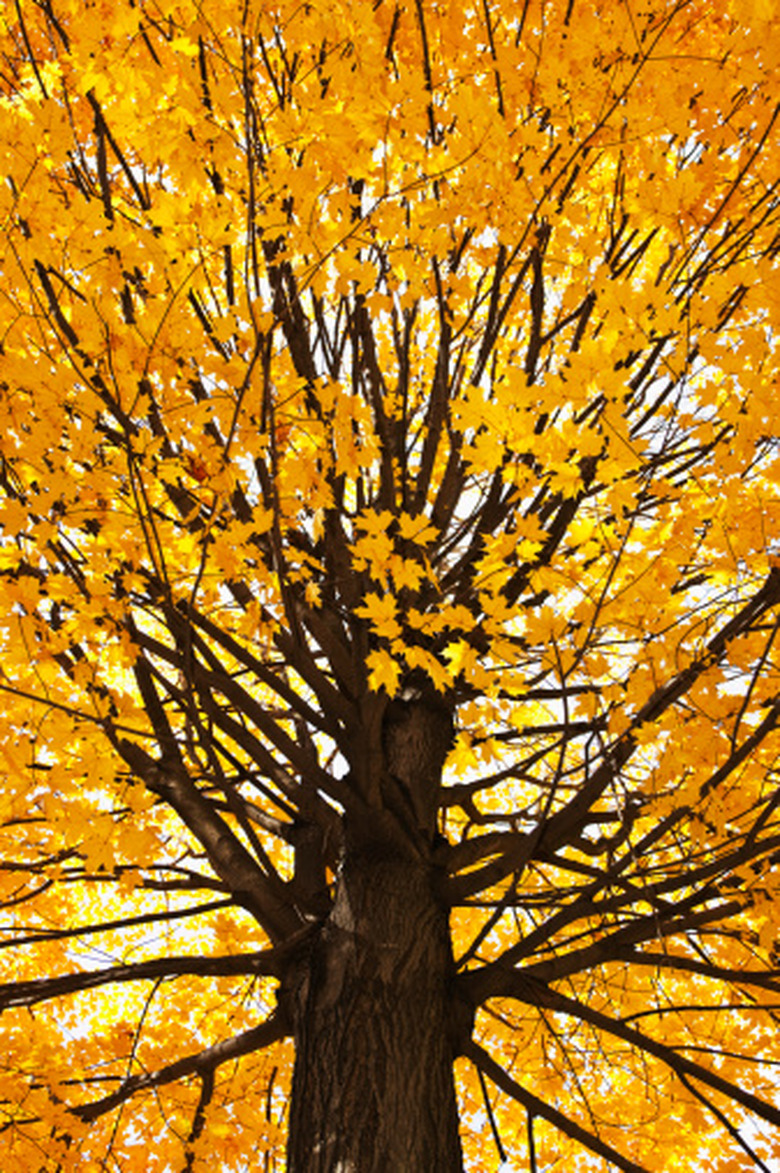What Is A Lateral Tree Branch?
The branching structure of trees varies among species, which gives them distinctive shapes, such as a spruce's pointed spire silhouette or the large, rounded canopy of an oak. All trees posses a basic structure of spreading root system, trunk and scaffold branches. Scaffold branches are the main, muscular arms that grow off of the trunk. A lateral branch is any secondary branch that grows off of the main trunk or scaffolds; all scaffolds are lateral branches that were once thin young twigs on the trunk.
Early Tree Development
Trees begin as slender saplings or whips. The seed germinates, sending out roots and a singular upright, unbranching stem. Once established, buds form on the stem and sprout, creating the first lateral branches. To ensure proper, even development of the young tree's canopy, horticulturists prune to ensure the lateral branches are strong and well-balanced. By the time the lateral branches appear and the seedling becomes taller, the seedling is now better called a sapling.
Formation of Scaffolds
The first lateral branches that arose from the sapling's thin trunk soon gain size and strength. They become the main branches that create the shape and silhouette of the tree canopy. These main, structural lateral branches are referred to as the scaffold branches. Scaffolds angle outward from the main trunk — most structurally strong if the angle of attachment to the trunk is between 45 and 60 degrees — and develop more lateral branches.
Lateral Branches
A growing tree produces variously sized and angled branches or twigs from the permanent scaffold branches. These lateral branches and twigs, which arise from lateral buds on the sides of scaffold branches, may be pruned away to balance the tree canopy or improve structural integrity of the tree. Lateral branches with narrow angled crotches — those less than 30 degrees — are structurally weak and are more likely to break or tear in winds. Horticulturists remove tight-angled laterals and leave the wide-crotched ones to maintain a well-branched tree on a tapering trunk.
Pruning Laterals
When young, small-diameter lateral branches are readily removed with a hand pruners or loppers flush with the scaffold branch or trunk from where they originate. Larger laterals are thick and heavy and require sawing to remove. The point of attachment on lateral branches is made stronger with tissues known as the branch bark ridge. On the bottom of the later branch is a slightly wider band called the branch collar. When a lateral is removed, the saw blades cut the wood just above the branch collar, and do not penetrate into the bark ridge on the scaffold branch or trunk. The pruning wound calluses, preventing insects and disease from entering into the tree.
